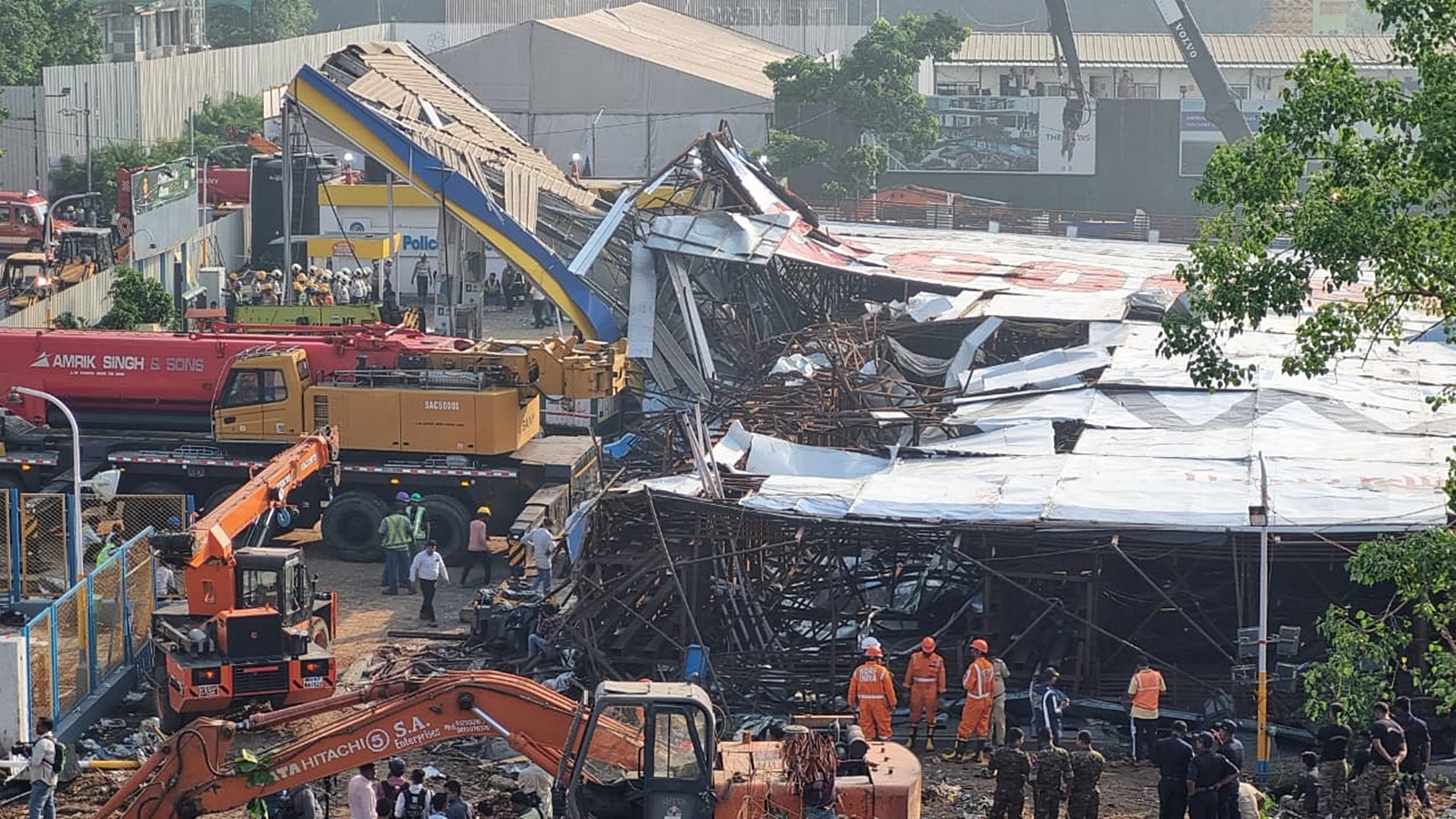From blacklisting of advertisers to insurance clause of up to 1 crore, BMC tightens norms after hoarding crash in Mumbai
Hoardings cannot be displayed on terrace, construction fence, dead walls, glass facade
 The hoarding collapse in Ghatkopar had killed 17 people. (Express File Photo)
The hoarding collapse in Ghatkopar had killed 17 people. (Express File Photo)Three months after an unauthorised hoarding in Ghatkopar came crashing on a petrol pump killing 17 people and injuring 75, the Brihanmumbai Municipal Corporation (BMC) has tightened its norms for city’s advertisers in its draft hoarding policy that includes blacklisting of advertisers for frequent violations on various grounds, including non-payment of fee. In the policy approved by BMC Commissioner Bhushan Gagrani on Thursday, which is now open for public suggestions and objections till August 28, the civic body — in a first — has also introduced an array of guidelines for digital hoardings.
According to the civic body, the new policy guidelines will cater to all approvals for city’s outdoor advertisements, including digital hoardings, for the next 10 years from the date of the issuance.
In its guidelines, the BMC has introduced a provision to blacklist advertisers (licence holders) on several grounds, including frequent violation over non-payment of fee, violation of the norms stipulated in the permit as well as if they have been convicted by the courts for offences involving fraudulence in business dealings etc.
Once blacklisted — which can be done permanently or for a specific time frame — the advertiser will not be permitted to apply for the installation of a new hoarding.
 According to the civic body, the new policy guidelines will cater to all approvals for city’s outdoor advertisements, including digital hoardings, for the next 10 years from the date of the issuance. (Express File Photo)
According to the civic body, the new policy guidelines will cater to all approvals for city’s outdoor advertisements, including digital hoardings, for the next 10 years from the date of the issuance. (Express File Photo)
According to the new rulebook, permits for hoardings will have to be renewed at least three months ahead of the licence’s expiry, reducing the time frame from six months. Furthermore, a clause on insurance cover ranging from Rs 5 lakh to Rs 1 crore in case of loss and damage due to hoardings has also been proposed.
For the record, the civic body had not renewed its policy since 2018, when it had expired. While the norms issued in 2008 called for the renewal of guidelines every 10 years, the BMC had not revised it since 2018.
Now, in its latest set of draft guidelines, the civic body has also laid norms prohibiting the display of hoardings in several areas of a building including terrace, construction fence, dead walls as well as glass facade. Along the roads, the hoarding display has been prohibited near the footpath, traffic island, median and gantry. Meanwhile, the installation has also been prohibited under high tension lines.
In the city, the size limit for hoardings has been capped at 40 feet x 40 feet, on the basis of the stud.
Digital hoarding policy
In light of the rising demand for digitisation, the civic body has also introduced new policy guidelines regulating digital advertisements, which will be permitted across malls, multiplexes, shopping malls and commercial buildings. The civic body is slated to permit multiple static images with a dwell time of minimum eight seconds. However, the norms have barred flickering advertisement and video display on digital hoardings.
According to the rules, all the digital and electronic ads will have to be switched off at 11 pm. Meanwhile, the advertisers will be stipulated to obtain NOC from the joint commissioner of traffic police, failing which the permits will not be granted.
The BMC is also in the process of providing online services for grant and renewal of permits.
Meanwhile, the civic body is set to rope in a specialised agency to carry out short-term surveys through field visits as well as float a citizen survey to seek their feedback in a bid to determine the illumination levels on the city’s digital hoardings. A civic official said that the agency will also be tasked with the feasibility of installing sensors, cameras and uploading data pertaining to the illumination levels on cloud to facilitate real time monitoring.
It must be noted that the BMC had inducted a committee to determine the guidelines for an LED hoarding policy. Besides senior civic officials, the committee comprises joint commissioner of police (traffic), three experts from IIT Bombay, an associate professor from JJ hospital as well as an external consultant.







